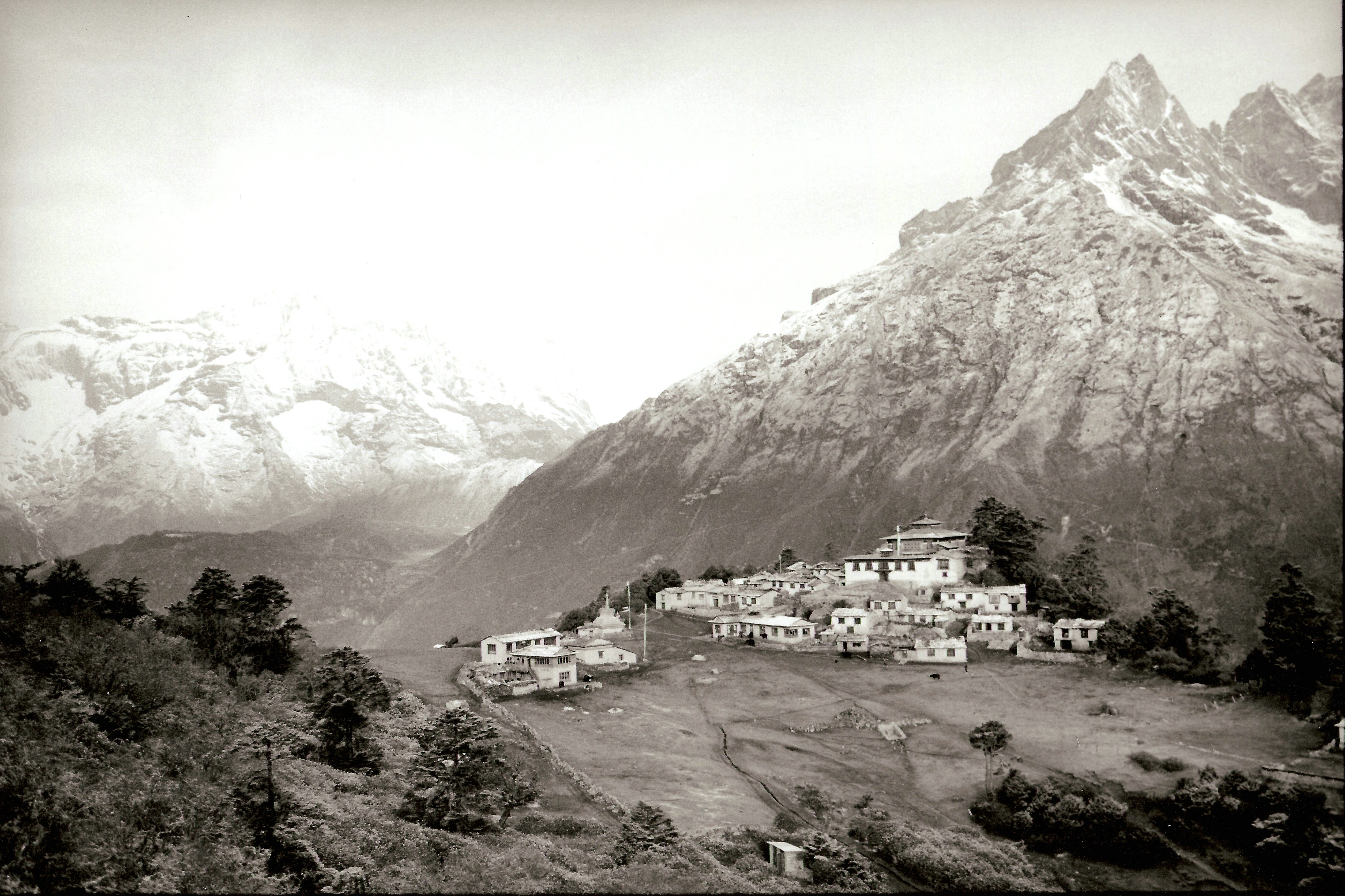 |
||
|
THYANGBOCHE MONASTERY, 1986 |
||
|
Thyangboche
Monastery is the spiritual center of Tibetan Buddhism in Nepal.
It is located in the land of Sherpas, the Khumbu, beyond Namche
Bazaar and Khumjung, on the ‘road’ to Kangtega, Ama Dablam, and
Everest. In this photograph
Khumbila, the sacred mountain of the Sherpas, rises high on the right,
beyond the Dudh Kosi Gorge and its great milk river.
The snowy north face of Kwangde lies beyond.
Thyangboche is serene and peaceful - the grounds green, the
atmosphere alive with hope. Small
lamas’ residences surround the large gompa.
The monastery is a welcome stopover for expeditions bound for the
Everest region. The head
lama’s blessing is sought by these groups’ members and Sherpas.
Mother Earth takes note of such ceremonies.
Sherpas are the finest of expedition companions.
Their attributes of cheerful-ness and a desire to serve no doubt
derive from their extraordinary lineage that extends back to the ancient
continent of Atlantis, 13,000 years ago.
Two hundred years prior to the destruction of their country, the
Atlantian inner priesthood, the Nakkal Brother-hood, knew of the
impending destruction and knew they must leave Atlantis and journey to
the distant Himalayas to continue their Earth stewardship.
With tremendous difficulty the Nakkals arrived in the Tibetan
Plateau and, eventually, seeded the Tibetan race.
More recently, about 500 years ago, the first Sherpas moved
through mountain passes into their new home in the high valleys of
Nepal’s Solu Khumbu. (Drunvalo Melchizedek, Serpent of Light)
Seeking ancient wisdom, a modern investigator asked the abbot of
an isolated Tibetan monastery, “When we see your prayers, with the
chanting and bells and gongs and mantras, what are you doing?”
“You have never seen our prayers,” he answered, “because a
prayer cannot be seen. What
you have seen is what we do to create the feeling in our bodies. Feeling
is the prayer!” (Greg Braden, Secrets of the Lost Mode of
Prayer)
It is the same for us. Traditional
climbers’ connection with Nature cannot be seen.
Our adaptation to the space Nature provides, and awareness of the
beauty, creates the feeling of appreciation and joy in our bodies.
Feeling is the communication
– and the connection.
|
||